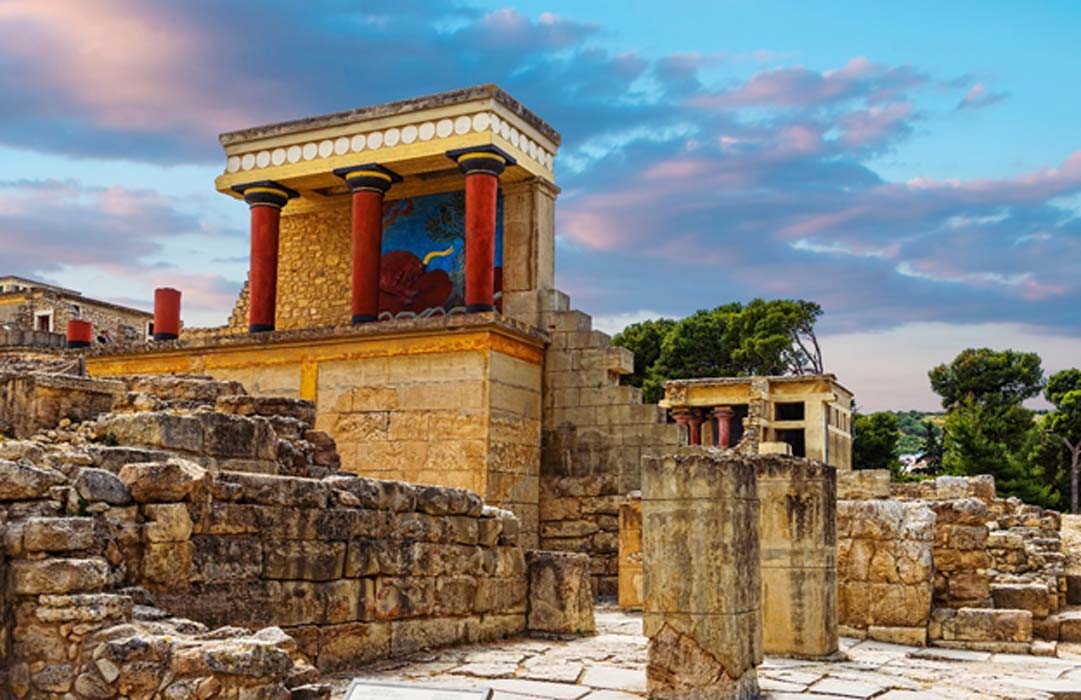
Knossos palace is a spectacular archaeological site which was once the center of the Minoan civilization on the Greek island of Crete. The site contains a number of ruins from the Minoan period, the most impressive of which is the Great Palace, known also as the Palace of Knossos . Although dubbed a ‘palace’, it is more accurate to refer to it as a ‘palace complex’, as it contained not only structures that would have served as a royal residence, but also those that played an economic, religious, and civil role in the society.
Archaeological evidence suggests that the site of Knossos was occupied by humans as early as the Neolithic period (the 7 th/8th millennium BC). Although human habitation at the site continued in the following millennia, it was only during the Bronze Age, about three – four thousand years later, that the first palace was built.
The first palace was built at the beginning of the Middle Minoan period, which lasted from 2000 to 1580 BC. This period may be further divided into two phases, the Old Palace and the New Palace, the former lasting from around 2000 to 1750 BC, while the latter was from around 1750 to 1500 BC.
In the centuries that followed the construction of the first palace, Knossos was ravaged by earthquakes, and the palace too was damaged. Nevertheless, the damaged areas were rebuilt, and new structures were added over the course of time. Around 1720 BC, however, the old palace was completely destroyed by a massive earthquake. Others, however, have suggested that the destruction occurred at a later date, around 1650 BC. In any case, a new palace was built, the remains of which occupy the excavated site today.

The famous Ladies in Blue fresco that once adorned the walls of Knossos palace. (Ioannis Syrigos)
The palace had four entrances, one in each direction, and there was a royal road running to the north of the complex. Apart from royal quarters, the palace complex also contained such structures as workshops, shrines, reception rooms, and storage facilities.
It was also during this period that magnificent frescoes were used to decorate the walls of the palace. At the southern entrance, for instance, is the Corridor of the Procession (known also as the Processional Walkway) where there is a fresco depicting a procession. Other well-known frescoes from the palace include the so-called Prince of the Lilies, the Ladies in Blue , and the Dolphin Fresco .
It was sometime during the 14 th century BC that the Palace of Knossos was destroyed, perhaps due to a fire, an earthquake, or a revolt against the Mycenaeans. The palace was abandoned and was eventually forgotten. It was only during the 19 th century that the Palace of Knossos was re-discovered. Today, the Palace of Knossos is a tourist site and is on the UNESCO World Heritage Site’s Tentative List, as part of a larger group known as the ‘Minoan Palatial Centres’.
Top image: The Palace of Knossos, Crete. Source: Pavel Timofeev / Adobe.






